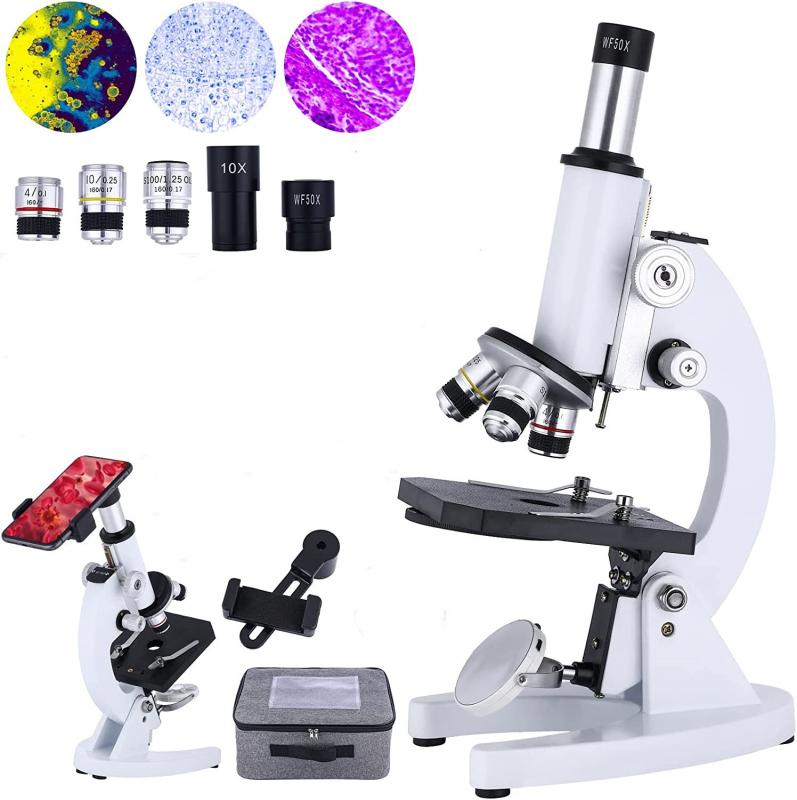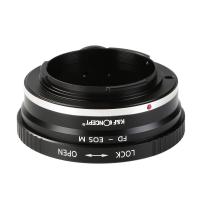Why Are Microscope Slides Stained ?
Microscope slides are stained to enhance the visibility of biological specimens under the microscope. Staining helps to highlight specific structures or components of the specimen, making them easier to observe and study. Different types of stains are used depending on the nature of the specimen and the specific structures of interest. Stains can be used to differentiate between different types of cells, highlight specific cellular components such as nuclei or organelles, or reveal the presence of certain substances or pathogens. Staining techniques can provide valuable information about the morphology, composition, and function of the specimen, aiding in research, diagnosis, and education in various fields such as biology, medicine, and pathology.
1、 Enhancing contrast: Staining improves visibility of cellular structures.
Microscope slides are stained to enhance contrast and improve the visibility of cellular structures. Staining is a technique used in microscopy to highlight specific components of cells or tissues, making them easier to observe and study under a microscope.
The primary reason for staining is to increase the contrast between different cellular structures. Without staining, many cellular components may appear transparent or have similar refractive indices, making it difficult to distinguish one structure from another. By applying stains, such as dyes or fluorescent markers, to the sample, specific structures can be selectively colored, allowing for better visualization and analysis.
Staining also helps to reveal the presence or absence of certain cellular components. Different stains can be used to target specific structures or molecules, such as DNA, proteins, or lipids. This enables researchers to identify and study these components in detail, aiding in the understanding of cellular processes and functions.
Moreover, staining can provide valuable information about the health and pathology of cells and tissues. Certain stains can highlight abnormal cellular structures or indicate the presence of disease markers. This allows for the diagnosis and monitoring of various medical conditions, including cancer, infections, and autoimmune disorders.
In recent years, advancements in staining techniques have led to the development of more specific and sensitive stains. For example, immunohistochemistry (IHC) staining utilizes antibodies to target specific proteins, enabling the visualization of protein expression patterns within cells and tissues. Additionally, fluorescent dyes and markers have become increasingly popular, allowing for the visualization of multiple structures simultaneously and providing more detailed information about cellular interactions and dynamics.
In conclusion, staining microscope slides enhances contrast and improves the visibility of cellular structures. This technique is crucial for studying cellular components, identifying abnormalities, and advancing our understanding of biological processes. The continuous development of staining methods and the use of more specific stains have further expanded the capabilities of microscopy, enabling researchers to delve deeper into the intricate world of cells and tissues.

2、 Highlighting specific components: Stains selectively target certain cell components.
Microscope slides are stained to enhance the visibility and contrast of cellular structures and components. Staining is a crucial step in microscopy as it allows researchers and scientists to observe and study cells and tissues in greater detail.
The primary purpose of staining is to highlight specific components within the cells. Stains selectively target certain cell components, such as nuclei, cytoplasm, cell membranes, or specific organelles, making them more visible under the microscope. By using different stains, researchers can differentiate between different types of cells, identify specific structures, and study cellular processes.
Staining also helps to improve the contrast between the cell and its surroundings. Cells are mostly transparent and lack color, making it difficult to distinguish different structures within them. By applying stains, the contrast is increased, making it easier to observe and analyze cellular structures.
Moreover, staining can provide valuable information about the health and functionality of cells. Certain stains can be used to identify abnormal cells, such as cancer cells, or to detect specific cellular processes, such as apoptosis or cell division. This information is crucial for medical diagnosis, research, and understanding various diseases.
In recent years, there has been a growing interest in developing new staining techniques that are more specific, sensitive, and less invasive. Researchers are exploring the use of fluorescent dyes and molecular probes that can target specific molecules or cellular processes. These advancements in staining techniques are revolutionizing the field of microscopy and enabling scientists to gain deeper insights into the intricate world of cells and tissues.
In conclusion, microscope slides are stained to highlight specific components within cells, improve contrast, and provide valuable information about cellular structures and processes. Staining techniques continue to evolve, allowing researchers to delve deeper into the microscopic world and unravel the mysteries of life at a cellular level.

3、 Differentiating cell types: Staining aids in distinguishing different cell types.
Microscope slides are stained to enhance the visibility and differentiation of cell types. Staining is a crucial technique in microscopy that aids in distinguishing different cell types based on their specific characteristics. By applying stains to the cells, scientists can highlight specific structures or components within the cells, making them easier to observe and analyze under a microscope.
One of the primary reasons for staining microscope slides is to increase contrast. Most cells are transparent and lack color, which makes it difficult to distinguish their various components. Staining introduces color to the cells, allowing researchers to differentiate between different structures such as the nucleus, cytoplasm, and cell membrane. This contrast enhancement enables scientists to study the morphology and organization of cells more effectively.
Moreover, staining can also help identify specific cell types. Different stains have an affinity for different cellular components, such as DNA, proteins, or lipids. By using specific stains, scientists can target and highlight particular cell types or structures of interest. This aids in the identification and classification of cells, which is crucial in various fields of research, including pathology, histology, and cell biology.
In recent years, advancements in staining techniques have allowed for more precise and specific staining of cells. Fluorescent dyes and immunohistochemical staining have become increasingly popular, enabling researchers to target specific molecules or proteins within cells. This has opened up new avenues for studying cellular processes, such as protein localization, gene expression, and cell signaling.
In conclusion, staining microscope slides is essential for differentiating cell types and enhancing the visibility of cellular structures. It allows scientists to study cells more effectively by increasing contrast and highlighting specific components. With the continuous development of staining techniques, researchers can delve deeper into the intricacies of cellular biology and gain a better understanding of various diseases and biological processes.

4、 Preserving samples: Stains help prevent decay and preserve specimens.
Microscope slides are stained for several reasons, with the primary purpose being to enhance the visibility of the specimen under the microscope. Staining allows for better contrast and differentiation of different structures within the sample, making it easier for scientists and researchers to study and analyze the specimen.
Preserving samples: Stains help prevent decay and preserve specimens. By staining the sample, it can be fixed and preserved for a longer period of time. Stains can act as a preservative, preventing the growth of bacteria or fungi that may cause decay or decomposition of the sample. This is particularly important when studying biological samples, as it allows researchers to examine the specimen over an extended period, ensuring accurate and reliable observations.
Additionally, staining can provide valuable information about the composition and characteristics of the specimen. Different stains can highlight specific structures or components within the sample, such as cell nuclei, proteins, or specific types of cells. This allows researchers to identify and study specific features of interest within the sample, aiding in the understanding of its function and behavior.
Moreover, staining can also help in the diagnosis of diseases and medical conditions. By using specific stains, pathologists can identify abnormal cells or tissues, aiding in the detection and classification of diseases such as cancer. Staining techniques have been crucial in the field of pathology, enabling the identification and characterization of various diseases and conditions.
It is worth mentioning that the latest advancements in staining techniques have focused on developing more specific and targeted stains. These stains can selectively bind to certain molecules or structures within the sample, providing even more detailed information and improving the accuracy of analysis. Additionally, newer staining methods aim to minimize the use of toxic or harmful chemicals, making the process safer for both researchers and the environment.
In conclusion, staining microscope slides is essential for enhancing visibility, preserving samples, and providing valuable information about the specimen. Stains play a crucial role in scientific research, medical diagnosis, and understanding the intricate details of biological structures and processes.








































